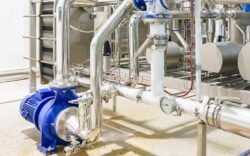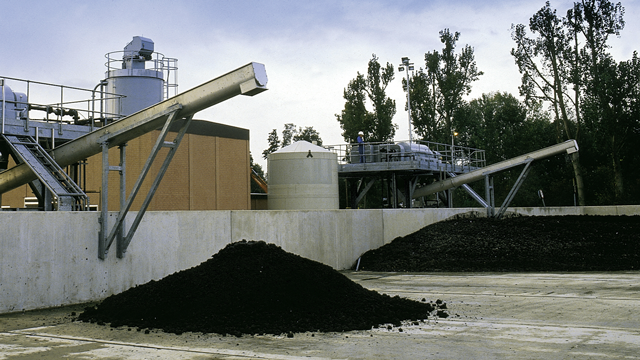Butterfly Valve Advantages And Disadvantages

Butterfly Valve Advantages and Disadvantages
Butterfly valves are widely recognized in the realm of industrial applications for their distinct advantages and some notable disadvantages. These rotary motion devices magnificently control the flow of fluids, including liquids, gases, and slurries. They are known for their compact design, reliability, and efficiency. This article explores the manifold advantages of butterfly valves, alongside their limitations, to provide a comprehensive overview. Understanding these facets can aid engineers, technicians, and purchasing managers in making informed decisions when selecting the appropriate valve for specific applications.
I. Introduction to Butterfly Valves
Butterfly valves get their name from the shape of the disc, which resembles a butterfly when in motion. The disc is centrally mounted on a rotating shaft and can pivot to either block, restrict, or allow fluid flow. Here are the key components:
-
- Disc: The primary element that controls the fluid flow.
-
- Shaft: Connects the disc to the actuator or handle, enabling rotational movement.
-
- Seat: Provides a sealing surface for the disc when in the closed position.
-
- Body: Houses the other components and connects to the piping system.
These valves operate by rotating the disc a quarter turn (90 degrees), either allowing unrestricted flow or completely blocking it, depending on the disc’s orientation.
II. Types of Butterfly Valves
Before delving into the advantages and disadvantages, it’s pertinent to understand the primary types of butterfly valves:
-
- Wafer Style Butterfly Valve: Installed between flanges via bolts; it does not require nuts as the flange nuts double as connection points.
-
- Lug Style Butterfly Valve: Features threaded inserts (lugs) on each side, allowing it to be bolted directly into the flange without additional hardware.
-
- Double Offset Butterfly Valve (High-Performance): The disc is offset from the valve seat, reducing wear and providing tighter shutoff.
-
- Triple Offset Butterfly Valve: Uses metal seats with an offset disc, praised for high pressure-temperature applications and zero leakage.
Each variant caters to specific requirements and applications, contributing to the overall versatility of butterfly valves.
III. Advantages of Butterfly Valves
1. Compact and Lightweight Design
One of the most compelling advantages of butterfly valves is their compact and lightweight design. Unlike other valve types, such as gate or globe valves, butterfly valves require a minimal amount of material to construct. This streamlined design results in several benefits:
-
- Space-Saving: Ideal for installations where space is constrained.
-
- Reduced Structural Support: Less weight decreases the need for robust support systems in piping networks.
-
- Easier Handling: Easier to transport, install, and maintain due to the lighter weight.
2. Cost-Effectiveness
The minimalist design of butterfly valves makes them more cost-effective compared to other valve types. The lower material requirements result in reduced manufacturing costs, which translates to consumer savings. Coupled with relatively simple construction, the cost-effectiveness extends to:
-
- Initial Purchase: Lower initial costs for acquiring the valve.
-
- Maintenance: Fewer components and straightforward design simplify maintenance, reducing downtime and service costs.
3. Quick Operation
Butterfly valves facilitate rapid opening and closing due to their quarter-turn mechanism. This operational efficiency brings about several advantages:
-
- Time-Saving: Swift actuation is crucial in processes needing timely flow regulation.
-
- Emergency Situations: Quick shut-off capability is vital in emergency shutdown scenarios to prevent spills or accidents.
-
- Automation: Compatibility with actuators for automated processes, enhancing operational efficiency.
4. Versatility and Flexibility
Butterfly valves can handle a wide array of applications, ranging from water distribution, chemical processing, and HVAC systems, to more specialized roles in power plants and maritime settings. This versatility is due to:
-
- Material Compatibility: Available in a variety of materials (such as cast iron, stainless steel, PVC, etc.), suitable for different media and temperature ranges.
-
- Size Range: Sizes range from small-diameter applications to large-diameter systems, accommodating diverse flow capacities.
-
- Bi-directional Flow: Managing flow in either direction without affecting performance.
5. Low Pressure Drop
When fully open, the disc of a butterfly valve presents minimal obstruction to the fluid flow, leading to low-pressure drops. This feature ensures:
-
- Energy Efficiency: Reduced fluid resistance demands less pumping power, conserving energy.
-
- Flow Efficiency: Maintains optimal flow rates, a crucial factor in large-scale industrial systems.
6. Easy Installation and Maintenance
The user-friendly design of butterfly valves simplifies installation and maintenance. Features contributing to this include:
-
- Fewer Components: Less complex assembly procedures and fewer parts to wear out or require replacement.
-
- Accessible Positioning: Can be installed in challenging orientations or confined spaces.
-
- Inline Repair: Certain models allow for maintenance without removing the valve from the pipeline.
7. Good Sealing Capabilities
Advancements in sealing technology have enhanced the reliability of butterfly valves, especially high-performance and triple offset designs. They achieve:
-
- Zero Leakage: Ensures complete shutoff when required, reducing waste and preventing contamination.
-
- High-Pressure Tolerance: Improved seals can withstand higher pressure conditions.
IV. Disadvantages of Butterfly Valves
Despite the aforementioned advantages, butterfly valves are not without limitations. The key disadvantages include:
1. Throttling Limitations
While butterfly valves can be used for throttling, their design does not always provide fine control over flow rates. The primary concerns include:
-
- Non-Linear Flow Characteristics: Sudden changes in disc angle can cause uneven flow increments.
-
- Potential Cavitation: In partially open positions, high-velocity flows can cause cavitation, damaging the valve and pipeline.
-
- Vibration and Noise: Partial openings might introduce vibrations and noise, particularly in high-velocity fluid systems.
2. Seal Wear and Tear
The disc’s continuous interaction with the seat during operation can lead to seal wear over time. Factors contributing to this issue include:
-
- Mechanical Wear: The rubbing action between the disc and seat can degrade seals, necessitating replacement.
-
- Chemical Attack: Exposure to corrosive fluids can deteriorate sealing materials.
-
- Thermal Stress: Extreme temperature fluctuations can cause seal shrinkage or expansion, compromising integrity.
3. Limited High-Pressure Applications
Butterfly valves, particularly standard models, may struggle in very high-pressure environments. While high-performance and triple-offset types can address this to some extent, general limitations include:
-
- Structural Integrity: Standard designs may not withstand high-pressure conditions, risking failure.
-
- Leakage Risks: Higher pressures can compromise the sealing capability of lower-end models.
4. Susceptibility to Particulates
In media containing suspended solids or particulate matter, butterfly valves may face operational challenges. This is due to:
-
- Blockage: Particles can accumulate around the disc or seat, obstructing movement or causing leakage.
-
- Erosion: Abrasive particles can wear down the disc and seal surfaces over time.
5. Restricted Temperature Range
Certain butterfly valve materials may have temperature limitations, affecting their suitability in extreme conditions:
-
- Material Degradation: High temperatures can weaken non-metallic components like rubber seats.
-
- Expansion Issues: Differing thermal expansion rates between the disc and body materials can lead to operational problems.
6. Manual Operation Strain
While manual operation offers simplicity, it can become strenuous for larger valves or when frequent adjustments are required:
-
- Operator Fatigue: Manually operating large-diameter valves can be physically demanding.
-
- Time Consuming: Regular manual adjustments can consume considerable time and effort.
V. Conclusion
Butterfly valves’ distinct combination of advantages and disadvantages offers a balanced perspective for potential users. Their compact design, cost-effectiveness, rapid operation, and versatile application make them appealing for various industries. However, the limitations concerning throttling precision, seal durability, pressure tolerance, particulate susceptibility, temperature constraints, and manual operation should be carefully evaluated.
Engineers and procurement specialists must weigh these factors against specific operational needs, environmental conditions, and long-term maintenance considerations. By doing so, they can ensure optimal system performance, reliability, and cost-efficiency when integrating butterfly valves into their processes.



